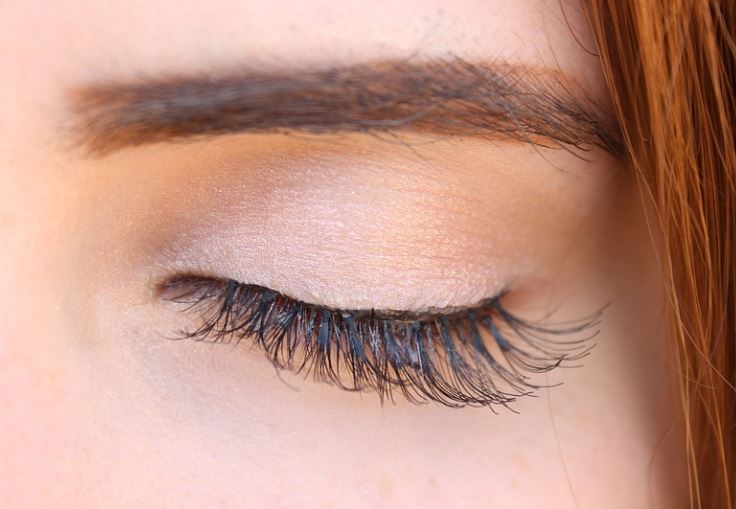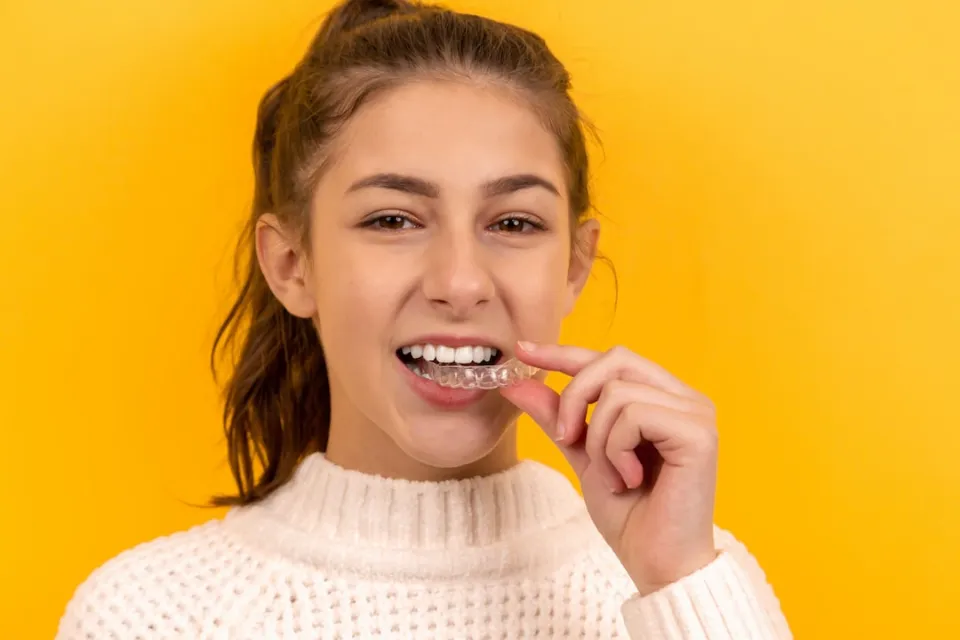Your beauty regimen can be entirely changed by eyelash extensions. Despite being practical and time-saving, lash extensions aren’t always simple to clean. Continue reading to find out how to properly clean lash extensions in accordance with professionals in order to keep your lashes in place and your money in your wallet.
Table of Contents
When to Clean Lash Extensions?
Cleaning your lash extensions every day is advised if you have oily eyelids. The same holds true for people who wear eye makeup. If you don’t have such problems, wash your lashes twice or three times a week.
You must clean your eyelash extensions after engaging in physical activities like swimming or working out in the gym.
Within 48 hours of their application, these extensions shouldn’t be wet. These extensions harden and become waterproof over time.
The glue that holds your lash extensions together will become damaged by things like oil, salt, sweat, and chlorine.
How to Clean Eyelash Extensions?
After your extensions have had a chance to fully cure for the first 48 hours, it is always a good idea to start cleaning.
The steps for maintaining eyelash extensions are listed below.
Get rid of your eye makeup first. Oil-free makeup removers can be used with a wet cotton tip to remove makeup.
The foundation must be taken out next. Any non-oily cleanser should work in this situation.
Next, wet your eyelashes with water.
On each lash, use a very small amount of lash shampoo. Apply this shampoo with a cleansing brush.
Use water to gently rinse it off. Dry the eyelashes with a lint-free towel.
What Are the Tips for Cleaning Lash Extensions?
When cleaning lash extensions, consider the following tips for success:
- Use lash shampoo. You should only clean lash extensions with a specialized product that is safe for your eyes, unscented, and designed for lash extensions, like a lash shampoo. To keep your lash extensions soft, special lash cleansers also include moisturizing ingredients.
- Avoid baby shampoo. When cleaning eyelash extensions, some makeup artists prefer to use baby shampoo. Baby shampoo, however, is frequently scented, which can irritate your eye areas. The baby shampoo’s sulfates and oils can also weaken the bond between your false teeth and their adhesive.
- Be gentle. To stop the false eyelashes from falling out while you’re cleaning your lashes, don’t move too roughly. When removing makeup and drying, gently dab your eyelashes.
- Use a hairdryer. To hasten to dry, use a hairdryer set to a low, cool temperature.
Why You Should Clean Lash Extensions?
Protecting your eyes from dust, pollen, dirt, and other foreign objects is the main function of natural eyelashes. The lashes serve the same purpose when you apply for extensions. Technicians fix extensions a few millimeters from the lash line during installation.
The lash extensions and natural lash lines will appear to have a very slight gap. This opening gradually fills with debris, dead skin, dust, and anything else the lashes block.

By cleaning them, you can get rid of the dirt that has gathered in the lash line and prevent it from doing so in the future.
The other justification is to stop oil from ruining your extensions. If you use oil-based cosmetics or have oily skin, the oil may seep into the eyelash adhesives and slowly deteriorate the extensions. Your lashes will last longer if you regularly clean your face to remove this oil.
What to Avoid?
Glycerin and oil-based products should never be used to clean your eyelashes. These items cause eyelashes to fall out by dissolving the lash glue. Shampoos, eye creams, conditioners, cleansers, spray toners, and moisturizers are just a few examples of products that contain oils.
When possible, stay away from wearing mascara or eyeliner, particularly waterproof varieties. They both make it very challenging to clean your lashes.
Never apply cleansing water to your eyelashes. Micelles draw skin oil from it. These oils are in charge of weakening and removing extensions.
The showerhead’s stream of water should not be used to clean your eyelashes. The high-pressure water stream that is coming at you could damage your extension.
It’s also a good idea to avoid using cotton buds, sponges, and other similar items on your eyelashes. These substances will remove the extensions.
Do not vigorously clean your eyelashes. Extensions for eyelashes are delicate. If you rub them firmly, they might fall out. Use a cleaning brush to gently scrub in its place.
Avoid harsh formulations that might irritate your eyelids.
What Are The Dos?
For maintaining lash extensions, mineral-based products work best. They are the ideal substitution for harmful oil formulations.
Cleanse your eyelashes at least twice a week. The maintenance regimen may be daily if you have oily eyelids.
Before rinsing your lashes with water, remove any unreliable extension cleanser.
Use a tissue to dab at the makeover rather than cotton buds.
The best time to clean extensions is right before going to bed at night. You clean up all of the debris, oil, dirt, makeup, and dust from the day.
Eyelash extensions are not harmed by water. You ought to embrace clean water when learning how to clean lash extensions at home. If you get your eyelash extensions within 48 hours of application, water becomes a problem.
What Happens If You Don’t Clean Lashes?
Your eyelids will become itchy and swollen if you don’t clean your lash extensions. To relieve the scratchy sensation, you’ll probably rub on your lashes all day. Your eyelids might get sore and the extensions might eventually fall off.
Blepharitis is brought on by extremely filthy eyelash extensions. A disease called blepharitis inflames the eyelids by infecting them. In the lashes, a buildup of dirt and dead skin cells fosters the growth of bacteria.
On the eyelids, bacterial overgrowth forms clusters called biofilms. Demodex, a type of parasitic mite, is drawn to bacteria biofilm. These mites eat both dead skin cells and bacteria. Itchy skin, redness, and painful inflammation of the eyelids are however the results of their excessive multiplication.
Also produced by bacteria are endotoxins. These substances infect the already inflamed eyelid and exacerbate the inflammation.
There is a lot of itching even though this infection is not life-threatening. You might be prevented from using lash extensions for a while.
Those who are unsure of how to properly care for their eyelash extensions may confuse blepharitis with an allergy to the eyes. Some of the symptoms that indicate blepharitis include:
- White flakes in your lashes
- Burning sensation in your eyelashes
- Redness
- Eye dryness
- Watery eyes
- Gritty feeling in my eyes

When you awaken in the morning, the majority of these symptoms become apparent.
When you follow a suitable lash cleansing routine, blepharitis goes away.
If you suspect you have this infection, call your doctor immediately.
Can You Use Baby Shampoo for Cleaning Lash Extensions?
The lashes cannot be cleaned with baby shampoo.
Most baby shampoos contain oils and dyes that could interfere with the bonds in lash extensions.
Baby shampoo is also rough on the skin around the eyes.
FAQ
How Do I Brush My Lash Extensions With a Spoolie?
Use a fresh spool or lash brush every time you need to brush your eyelashes. Place the spool at the base of your lashes and gently stroke down to the tip of each lash. Be careful not to accidentally loosen the bond between your skin and the lash by brushing the base of your lashes.
How Often Should You Brush Your Lash Extensions?
You need to brush your eyelashes frequently (ideally in the morning) or whenever they get wet if you want them to last longer.
Should You Brush Your Lashes When They Are Wet?
If your lashes are wet, you shouldn’t brush them. Instead, let them air dry or gently pat them dry with a clean towel before brushing.
Conclusion
It’s critical to rule out other potential causes of eye irritation before assuming you have blepharitis, such as an allergy to eyelash adhesives. For medical advice, please first speak with your physician or pharmacist.





